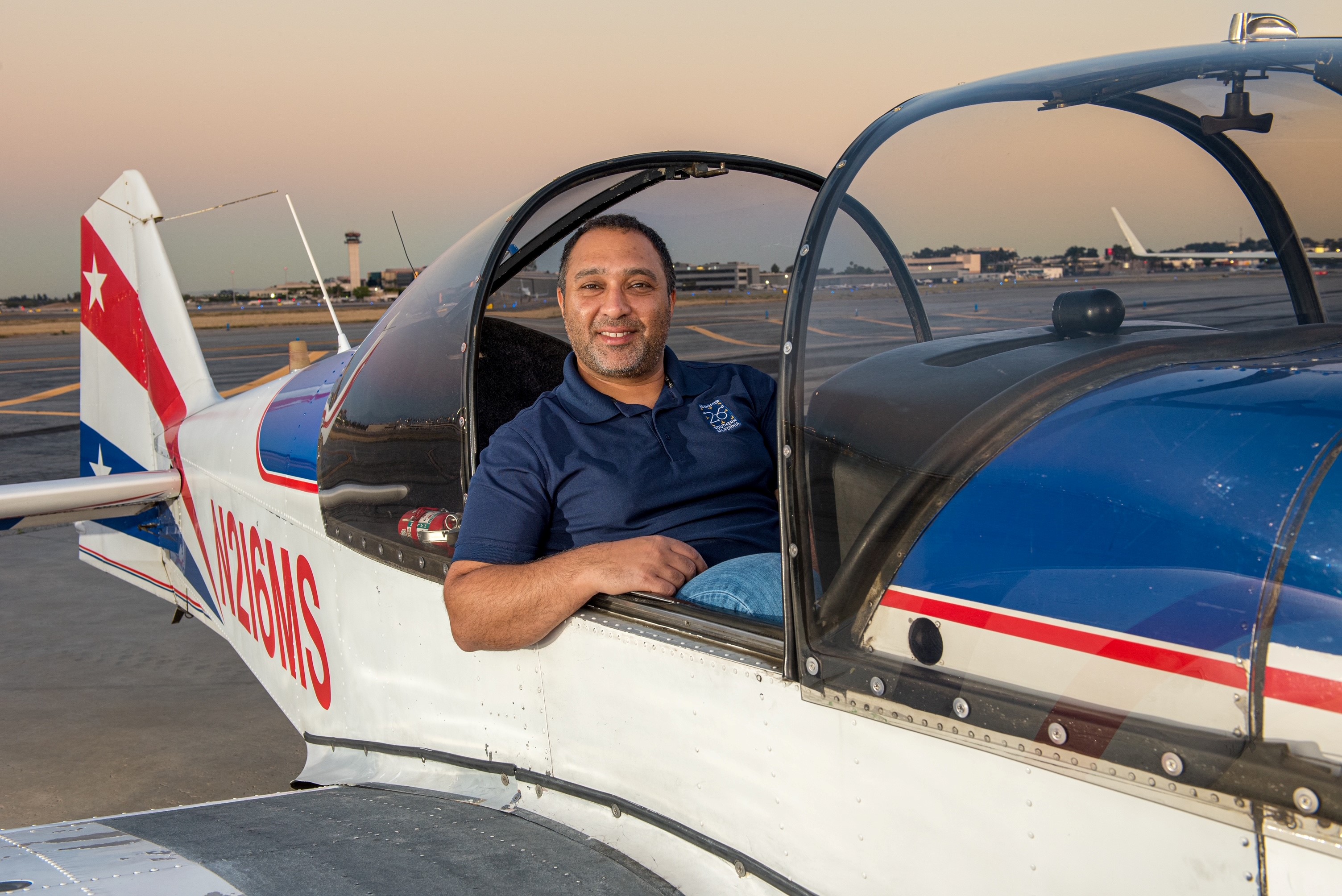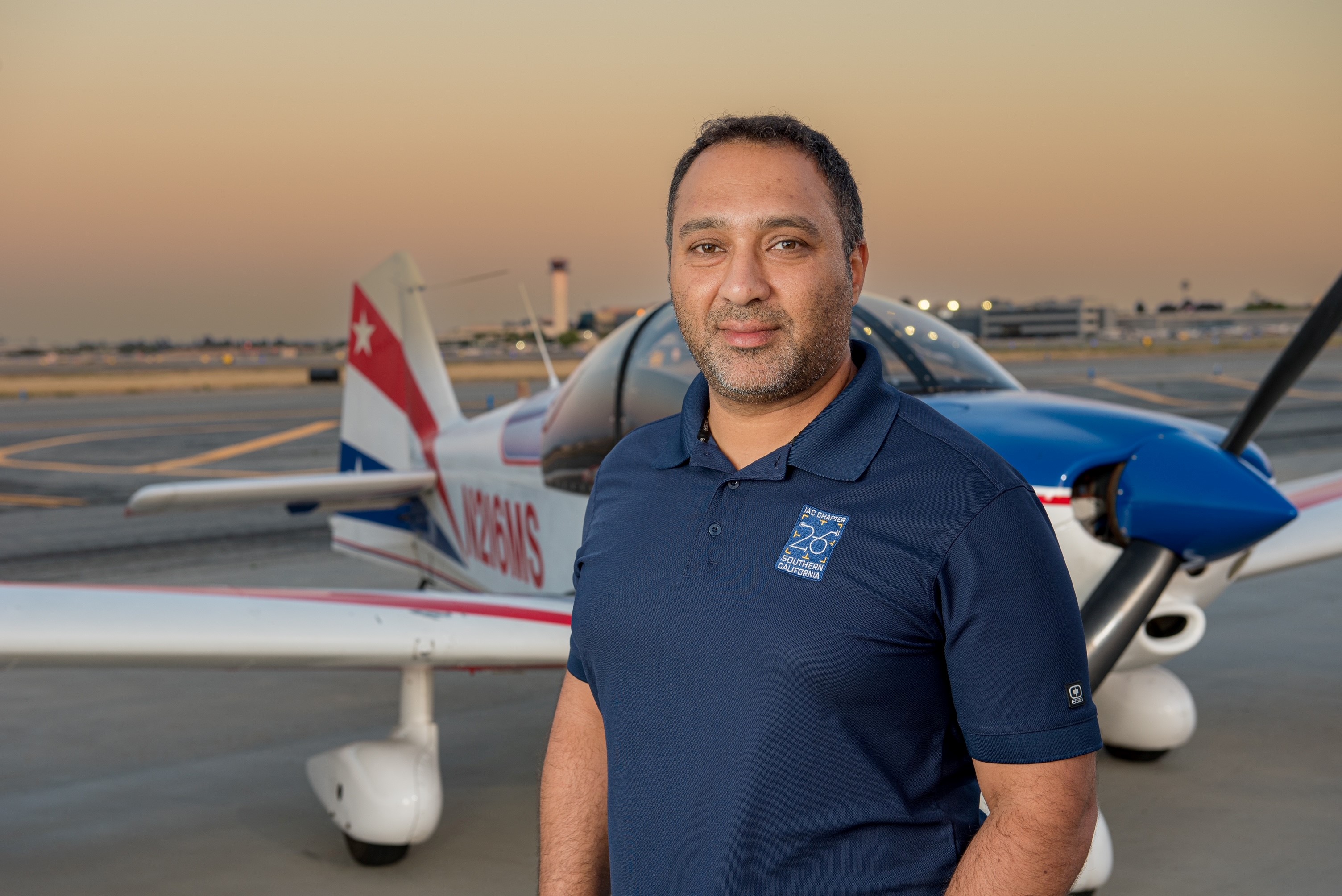By Zinnia Kilkenny, IAC 437244

ZK: How were you introduced to aviation?
RM: A few friends took me up for a typical sightseeing flight or a hundred-dollar hamburger, which was great fun but at the time was not enough for me to make the financial commitment to pursue a pilot’s certificate. It wasn’t until a friend took me out on an aerobatics flight in his Nanchang CJ-6 from Torrance airport to the Long Beach practice area that I knew not only that I wanted to become a pilot but an aerobatic pilot. It was truly an incredible experience.
Being passionate about motorsports and having competed in some forms of auto racing, discovering aerobatic flying was the equivalent of motorsports in the aviation world. Living in Long Beach with the aerobatic practice area 10 minutes away was like having a racetrack in my backyard that I could access anytime. It was hard not to go for it!
ZK: When did you receive the pinnacle entry in your logbook?
RM: I looked for local flight schools at the Long Beach airport and picked one that had an aerobatic airplane, a Robin 2160, in its fleet. I started training, and sure enough, my third flight lesson was an aerobatic flight, where we did aileron rolls, barrel rolls, and loops. I still remember that day very well; it was as memorable as when I soloed.
ZK: You currently fly a Robin. What drew you to it?

RM: The Robin is aesthetically a beautiful airplane, with a red, white, and blue paint scheme, low wings, and a huge bubble canopy. It is also very easy to fly with a tricycle gear arrangement; in fact, some schools in France, New Zealand, and Australia use it as a primary trainer. But what I love about it the most is the side-by-side seating. I love providing pilots and friends with their first aerobatic experience and to look to my side and see their smiles after a loop or a roll is priceless.
ZK: Why did you join the IAC, and how have you benefited?
RM: After flying many aerobatic flights in the practice area with more skilled pilots and instructors, I wanted to take my aerobatics to the next level. I wanted my skills to be measured against other pilots within a structured set of competition rules. I believe, this is the best way to improve and advance my flying skills.
Flying in a practice area and performing aerobatic maneuvers comfortably and for fun is thoroughly unlike flying a set of predetermined maneuvers that must be executed within a limited space (the aerobatics box) before a panel of judges. If we compare that to the car world, it would be like speeding around a racetrack as fast as you can while having fun sliding around some corners. Still, you have no way to know if you're doing well unless someone is timing your laps against other drivers driving similar cars and following the same set of competition rules.
I realized the benefits of contest aerobatics immediately after joining Chapter 26. Chapter president Susan Bell provided me with my first Zoom instructional session. She guided me through a step-by-step process to execute every maneuver during the chapter’s scheduled practice days. In addition, an observer is on the ground providing feedback and critiquing our flying technique. This resulted in enhanced performance and greatly helped me think ahead, to understand where I need to be aggressive, where I need to be smooth, as well as be more vigilant with altitudes and headings at the beginning and end of each maneuver.
ZK: What would you like your contribution to be?

I like to introduce the sport of aerobatics to as many pilots as possible and provide them with the guidance and support they need if they decide to pursue the sport. My long-term goal is to develop an aerobatic training program with multi-levels - starting from training pilots interested in performing basic aerobatics maneuvers safely to preparing pilots for the Primary or Sportsman level of aerobatic competition and offering support during their contest events. I want to keep improving my skills and flying more advanced airplanes for as long as possible and see how high I can reach.

